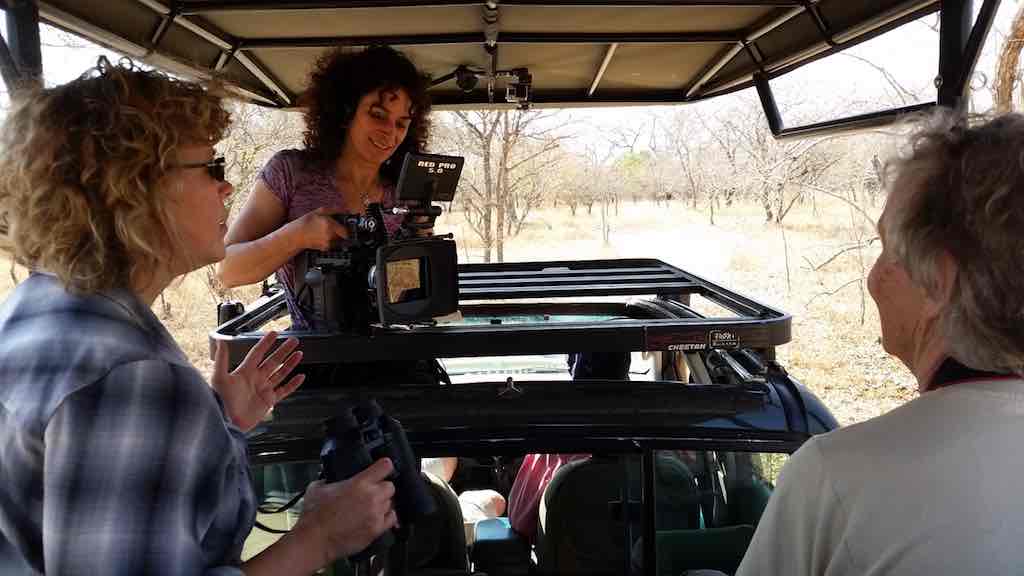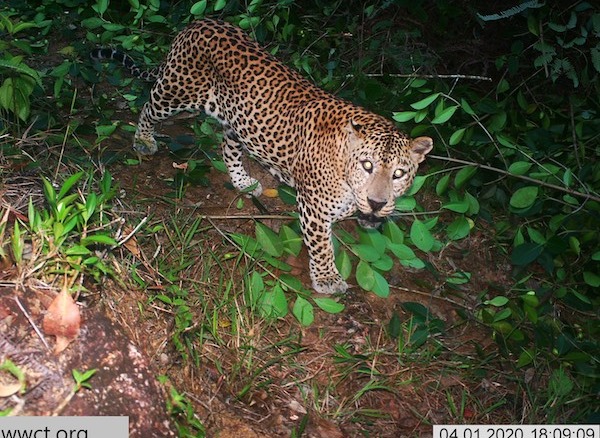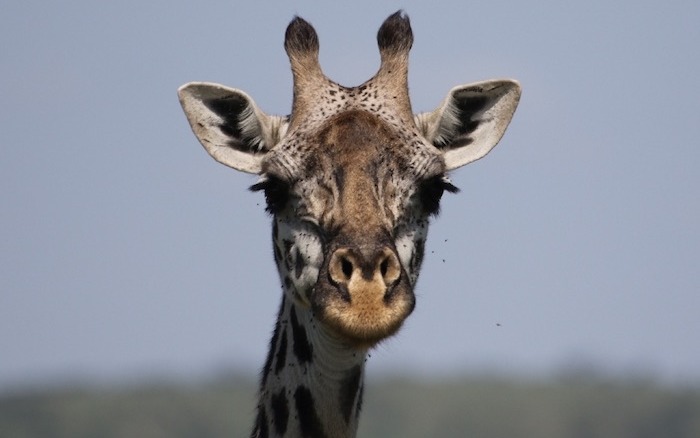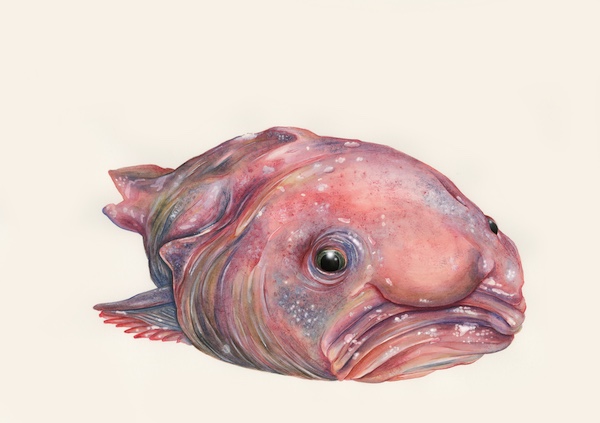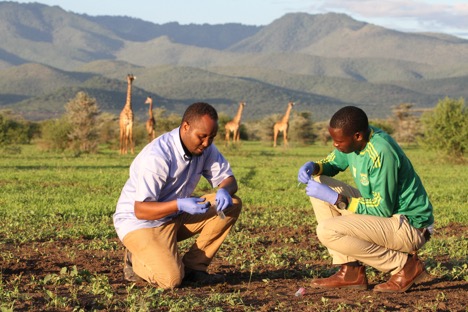Doug Beetle talks with:
Scientist
Anne Innis Dagg
Filmmaker
Alison Reid

Anne Innis Dagg (left) and Alison Reid (right).
Dr. Anne Innis Dagg is a Canadian biologist and the first person to study wild giraffe behavior in Africa. Anne began her giraffe studies in South Africa in the 1950s. Anne has written several books about giraffes and inspired many other scientists to study giraffes also.
Alison Reid is a filmmaker who worked with Anne to make a documentary film about her life called The Woman Who Loves Giraffes. The inspiring film tells the story of how Anne became interested in giraffes as a girl and followed her interest all the way to Africa and beyond.
Read on as we chat to Anne and Alison about giraffes and this moving documentary film!
Interview with Anne:
Mongabay Kids: What advice do you have for young people who want to be field biologists and study giraffes or other animals in the wild like you did?
Anne: Studying animals today is more important than ever before. Find a subject or an animal you have a passion for and pursue it.
There will be hard times, but don’t give up. Learn as much as you can and if you have the opportunity to go to university and get a masters or a PhD, take it.
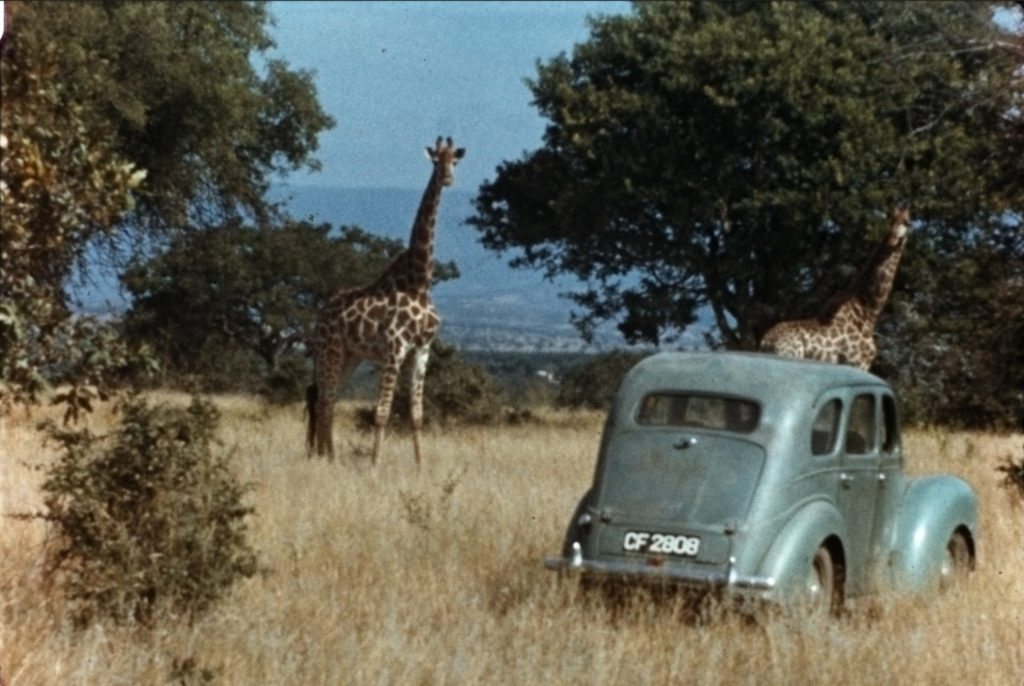
Mongabay Kids: What do you most want people to know about giraffes that they might not know?
Anne: There are so many amazing things about giraffes it’s hard to choose. They have the biggest heart of any land mammal – they have a special blood pressure system that has been used to develop astronaut space suits – and they have the same number of vertebrae in their necks as you and I – seven.
You can find many more interesting things about giraffes on my website for The Anne Innis Dagg Foundation under the Giraffe Facts tab.
The thing that’s most disturbing that many people don’t know is that they [giraffes] are endangered. We need to do everything we can to stop giraffe numbers in the wild from declining any further.
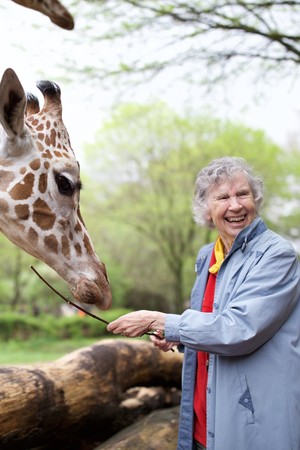
Mongabay Kids: How can young people who want to protect giraffes and their habitat (or other animals) make a meaningful contribution to conservation even if they do not have any money and cannot go into the field where giraffes live?
Anne: There is a lot everyone can do to help our planet and all the animals on it. Here are a few ideas:
Be conscious of the way you live and make as small a footprint on the planet as you can. Don’t waste. Refuse to use single use plastics. Be kind to animals, and do everything you can to help them.
I am a vegetarian and if we all ate a lot less meat the planet and the animals would be a lot healthier.
NY State has signed into law the Save Our Species Bill – which prohibits selling endangered animal parts – which helps protect giraffes and many other species.
See if your state has a similar bill and if not, petition your Governor to pass one.
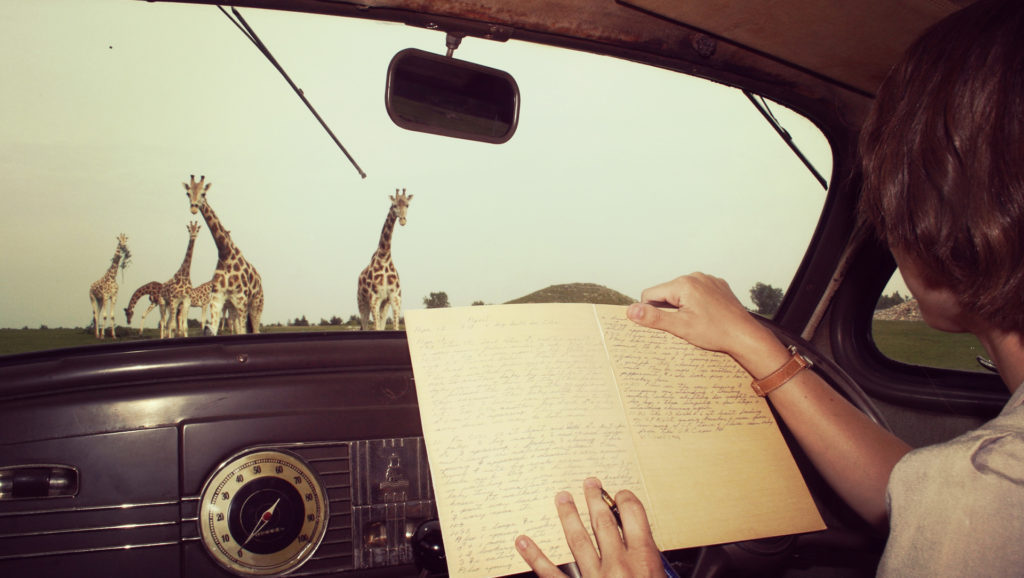
Interview with Alison:
Mongabay Kids: How did you discover the story of Anne Dagg and her work on giraffes? Did you have any special interest in giraffes before you knew of Anne and her work?
Alison: I discovered Anne when I heard a radio interview with her. I was so intrigued by her story, I read her book Pursuing Giraffe: A 1950’s Adventure – and immediately envisioned a film.
I met Anne and told her I’d like to make a film about her. She wanted us to make a film about giraffes – but I was able to convince her that a film about her and giraffes would be a good way to go.
Mongabay Kids: What are some of the challenges of filming animals like giraffes in the wild? Did you have any training in making a nature documentary, or did you learn how to do it as you went along?
Alison: I come from the scripted world of film and television and had never made a documentary before so there was a big learning curve for me on The Woman Who Loves Giraffes. I definitely learned as I went along – and it was a fun and rewarding process. How could travelling with Anne in Africa not be fun!
One of the challenging things I discovered about filming giraffes is they are very tall, and our screens are quite the opposite – so framing giraffes and people is not a natural fit.

Mongabay Kids: What advice do you have for young people who might be interested in making a nature documentary? How could they get started, what kind of skills do they need, and what are some of the challenges they are likely to encounter?
Alison: The main challenge for filmmakers is finding financing – but the good news is that many of us can access ways to film and edit right at home, so you can accomplish a lot without much funding at all.
Pick a subject that fascinates you and film it on your phone and get creative. It will be fun and you never know where you can go with it.
Mongabay Kids: What would you most like people to know about Anne and her story? What would you like them to know about filmmaking?
Alison: Anne’s story is incredibly inspiring to me – and it’s been so rewarding to see audiences watch the film be as moved by her as I am.
Filmmaking is something that gets in your blood. You have to be passionate and driven and tenacious to succeed, but there is no feeling like it.
